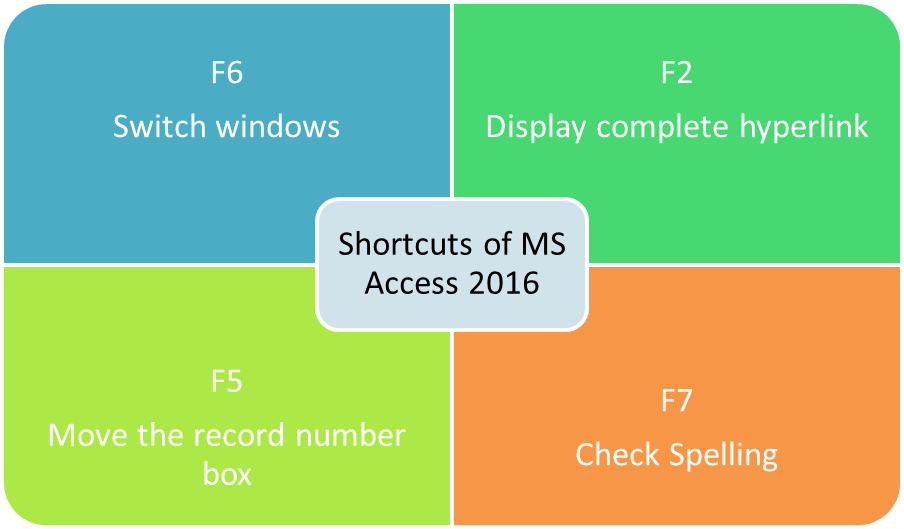Course Content
Getting Started with MS Access 2016 User Interface
- Access Ribbon
- Overview of FILE
- Save a Database as a Template
- HOME
- CREATE
- EXTERNAL DATA
- DATABASE TOOLS
- Contextual Tabs
- Overview of Quick Access Toolbar
- Object Navigation Pane
- Access Work Surface
- Access Options Dialog Box
- Object Overview
- Overview Tables
- Reports
- Understand Queries
- Define Forms
- Macros to do task and Modules
- Process Overview
- Build Database with the help of Wizard
Fundamentals
- Basic questions
- Know Purpose of the database
- Various users of the database
- Kind of output we need
- Approaches to Design Database
- Top-Down
- Bottom-Up
- Gather Information
- Data Mapping
- Sample Data Map
- Naming Conventions
- Normalization
- 1st NF
- 2nd NF
- 3rd NF
- Table Relationships
- Different types of Relationships
- Normalizing Data
Handling Queries
- Building Simple Queries
- Sorting and Filtering of Data in a Query
- Performing Calculations
- Learn Dynaset
- Enter Criteria: Exact Match and Range Operators
- Understand difference between AND versus OR
- Use of Wild Cards
- Learn about use Keywords
- Sort and Hide Fields
- Create Multi-Table Queries
- Additional Tips
Handle Forms
- Build Basic Access Forms
- Work with Data on Access Forms
Generate Reports
- Build a Report
- Add Controls to a Report
- Improve an Appearance of a Report
- Preparing a Report for Print
- Organise Report Information
- Format Reports
Join Tables
- Create Query Joins
- Relate Data Within a Table
- Work with the Sub-datasheets
Data Validation
- Use of Field Validation
- Use of Form and Record Validation
Table Functions
- Import Data
- Linking Tables from External Sources
- Import Tables from other Databases
- Tables from Templates and Application Parts
- Import Data from Excel
- Export Data to Excel
Macros
- Macro Basics
- Opening a Table, Form, and Report
- Run a Query
- Print a Report
- Run a Macro
- Create Simple Macros
Organising a Database for Efficiency
- Data Normalization
- Create a Junction Table
- Improve Table Structure
Advanced Reporting Techniques in MS Access 2016
- Include Control Formatting in a Report
- Insert a Calculated Field to a Report
- Insert a Sub-report to an Existing Report

 ENQUIRE
ENQUIRE
 REQUEST CALLBACK
REQUEST CALLBACK
 GET A FREE QUOTE
GET A FREE QUOTE


 Introduction
Introduction Course Details
Course Details Course Content
Course Content





 London
London